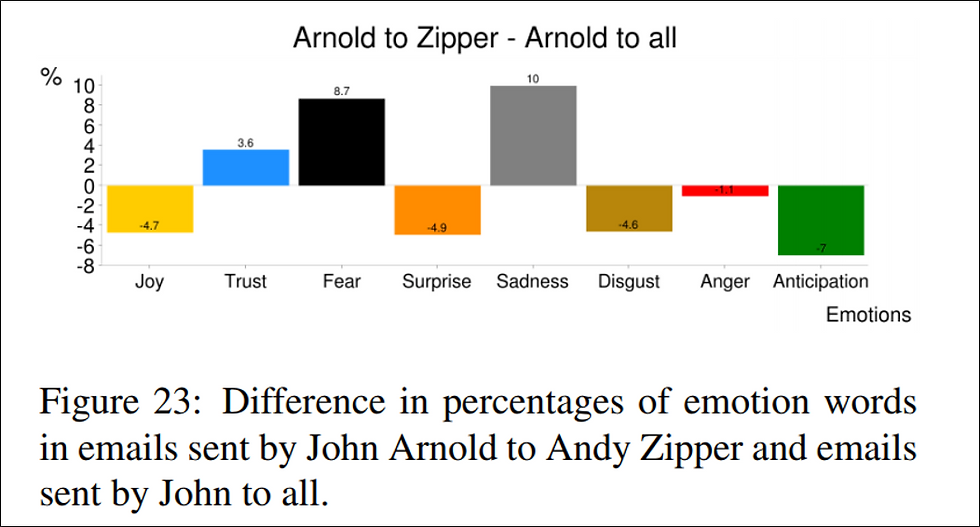Sentiment analysis can used to track emotions used in large email data sets. An excellent paper on such analysis is available here. Saif M. Mohammad and Tony (Wenda) Yang, Tracking Sentiment in Mail: How Genders Differ on Emotional Axes, (Sept. 24, 2013).
The authors created a dictionary of emotion related words through crowdsourcing. They analyzed emotions in emails based on both positive/negative/neutral sentiment, as well as the individual emotions of joy, sadness, anger, fear, trust, disgust, surprise, and anticipation.
The relative salience of a word across two target sets is calculated by dividing the frequency of an emotion word by the number of word tokens in a text set, and subtracting it from the percentage in the second text set.

Mohammad and Yang used the Enron email data set to analyze business email communications. While the primary focus of the study was the difference in emotions used by men and woman, the study also looked at the percentage of positive versus negative words used in emails sent by a particular custodian to different recipients:

. . . emotions expressed in emails sent by that custodian to a particular recipient versus the rest of his emails:

. . . and a change in sentiment in emails sent to a particular recipient over a period of time.






